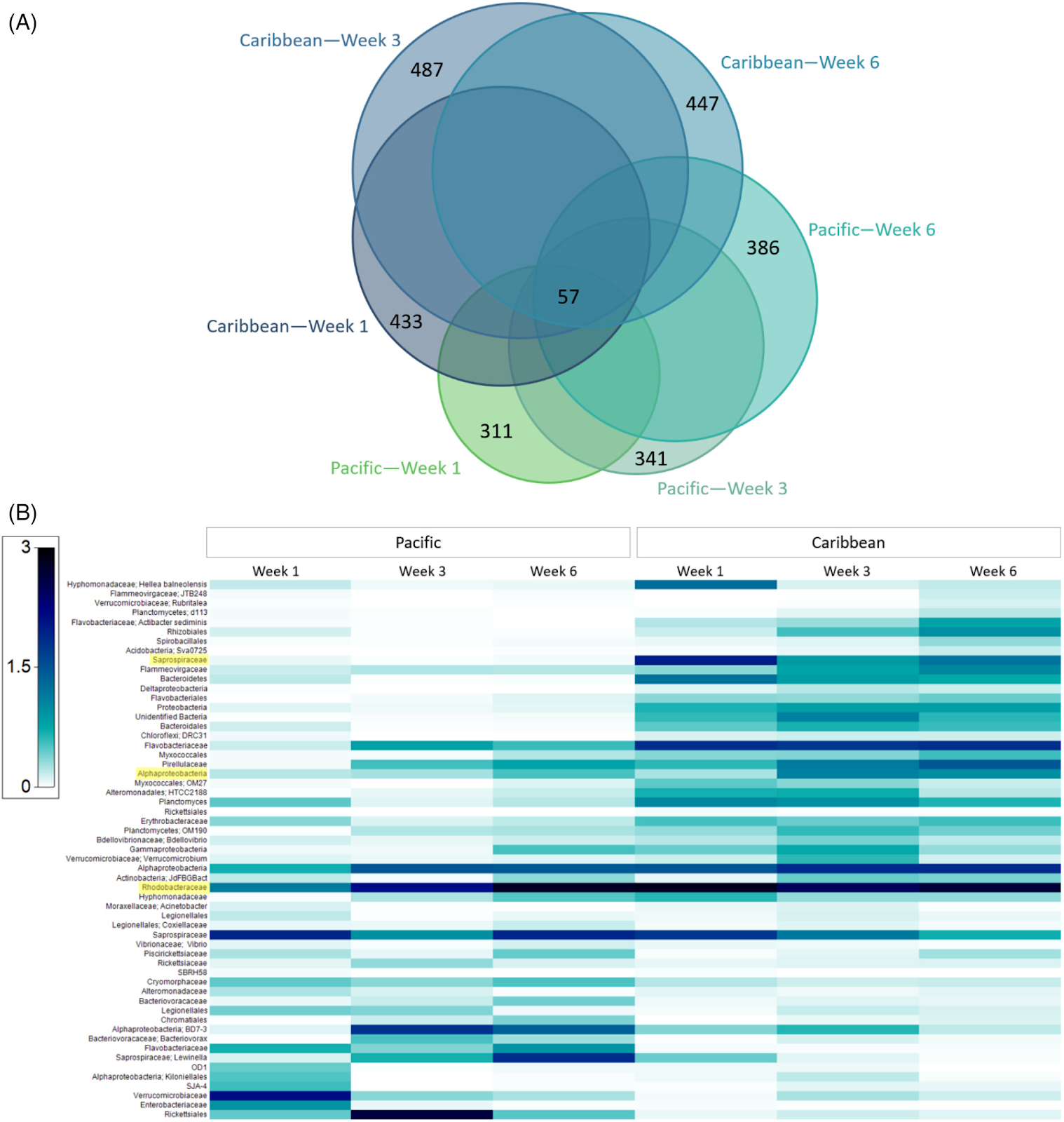By: Victoria Spring
The Venn diagram (A) shows the category-specific (i.e., Pacific—week 1, etc.) and core taxa in microbial communities throughout all plastic types found in the Pacific Ocean and Caribbean Sea (Dudek et al., 2020). The size of the circle correlates to the classified taxa. The heatmap (B) shows all 57 core taxa and their relative abundance as affected by time and location within the core community. The highlighted classified amplicon sequence variants (ASVs) show a mean relative abundance of >1% throughout the samples.
Human's excessive use of plastic and lack of suitable waste disposal has led to a rise in pollution. As a result, marine ecosystems face a worldwide microplastic hazard. Researchers conducted a study to determine the effects of different plastics, incubation periods, and geographic settings on a plastisphere's microbial community. In the study, the researchers analyzed six varying plastic polymers found in ordinary households. The polymers withstood a 6-week incubation period in coastal Pacific waters and served as secondary microplastic representations. The researchers then compared the bacterial plastisphere community to an identical once incubated at Bocas del Toro and Panama in the Caribbean Sea. Researchers in this study found that the incubation period and geographic location had the most significant effect on the bacterial community and that the type of plastic did not affect it. The study also found a 'core plastisphere' consisting of 57 amplicon standard sequence variations to different plastics, incubation periods, and locations. The researchers concluded that geographic location and incubation periods significantly affect a plastisphere's composition.
Original Article:
Dudek, K.L. & Neuer, S. (2023) Environmental exposure more than plastic composition shapes marine microplastic-associated bacterial communities in Pacific versus Caribbean field incubations. Environmental Microbiology, 1-15. Available from: https://doi.org/10.1111/1462-2920.16519

No comments:
Post a Comment